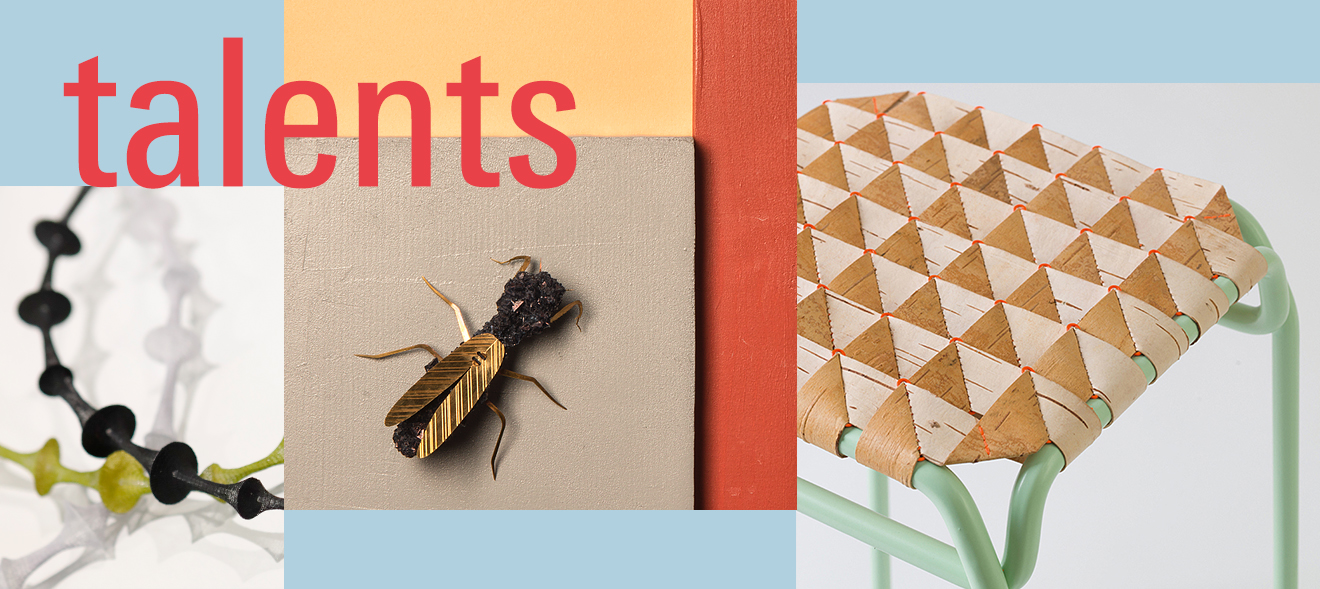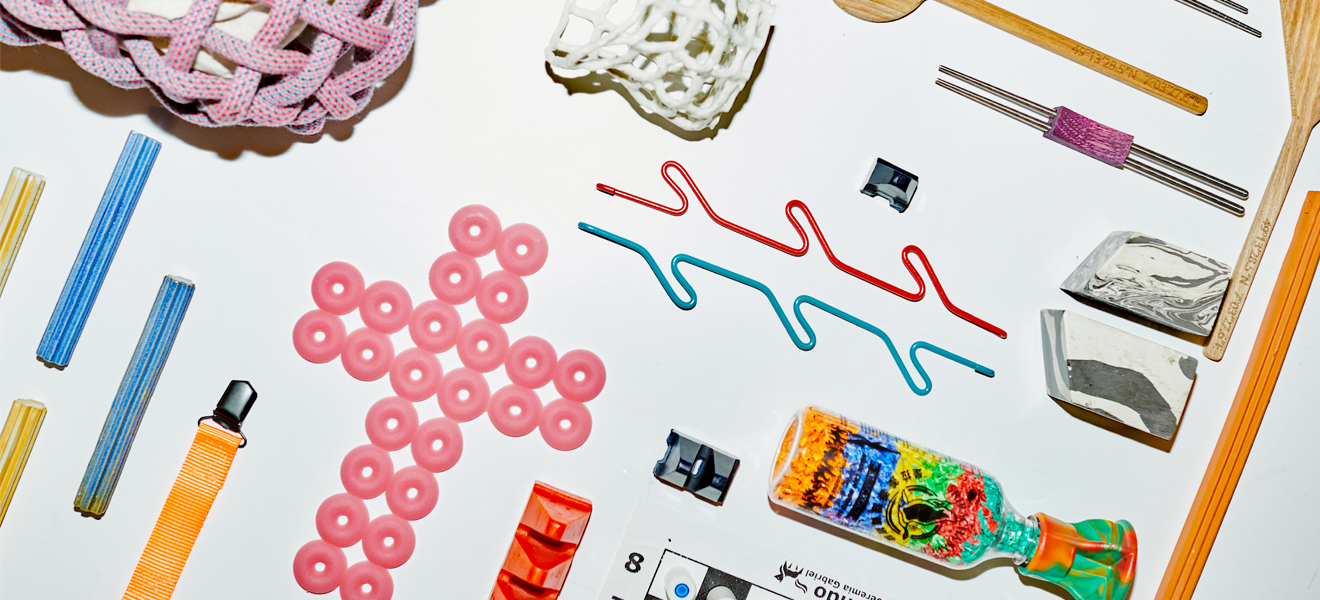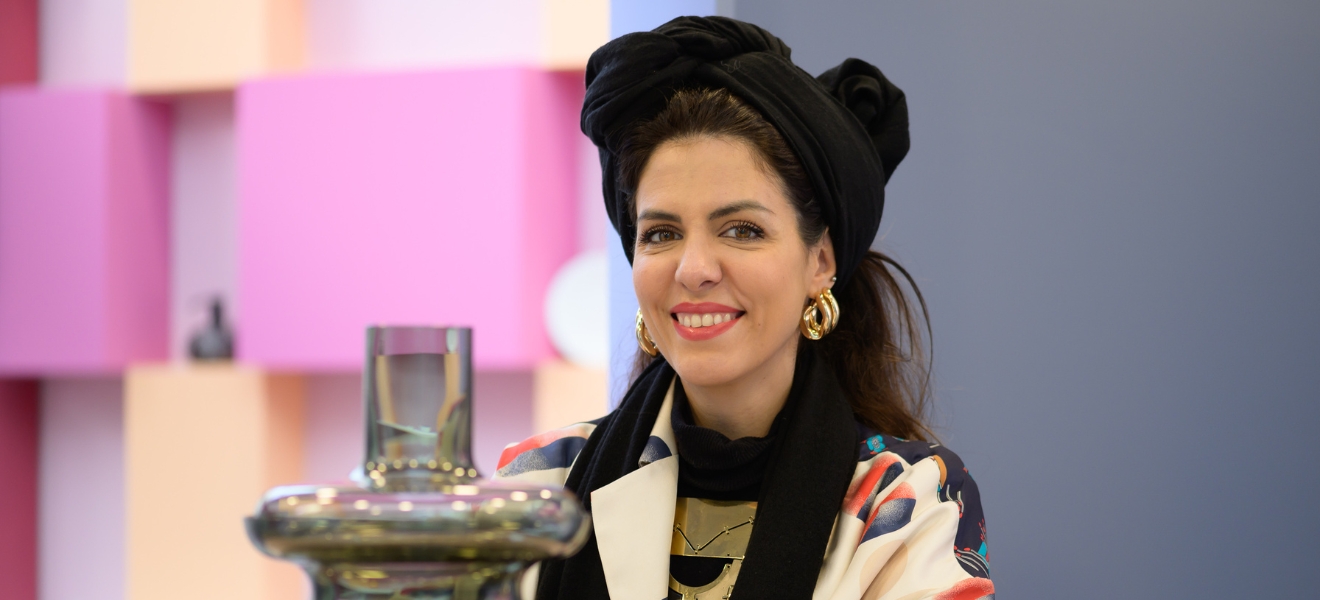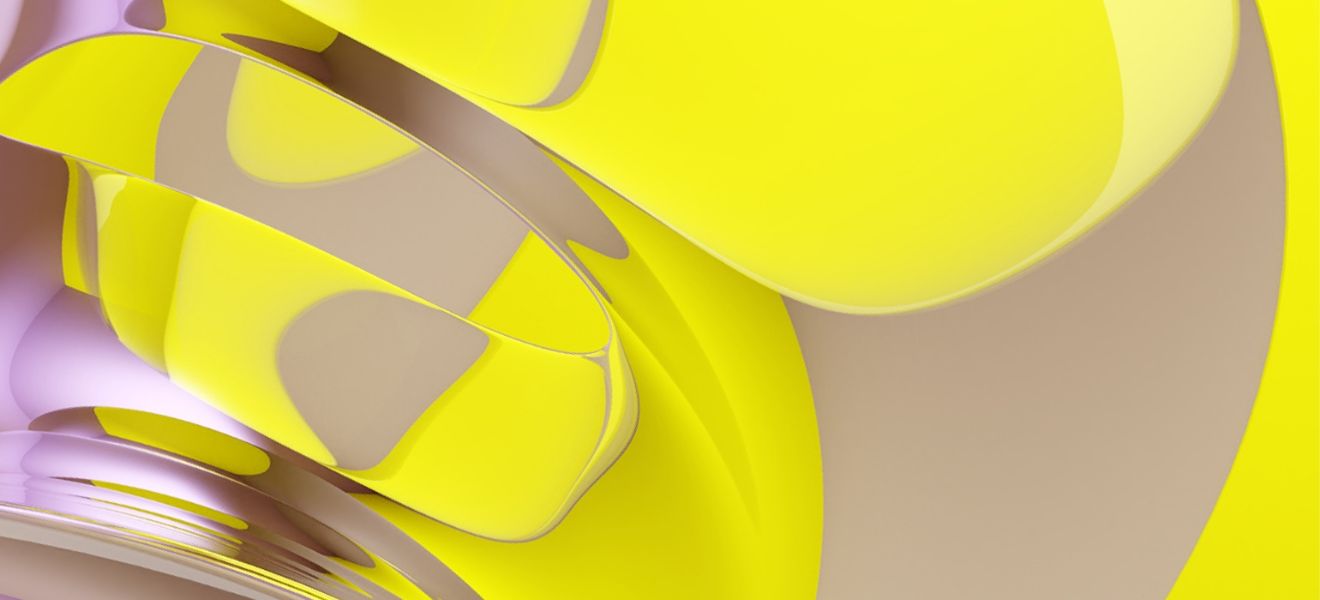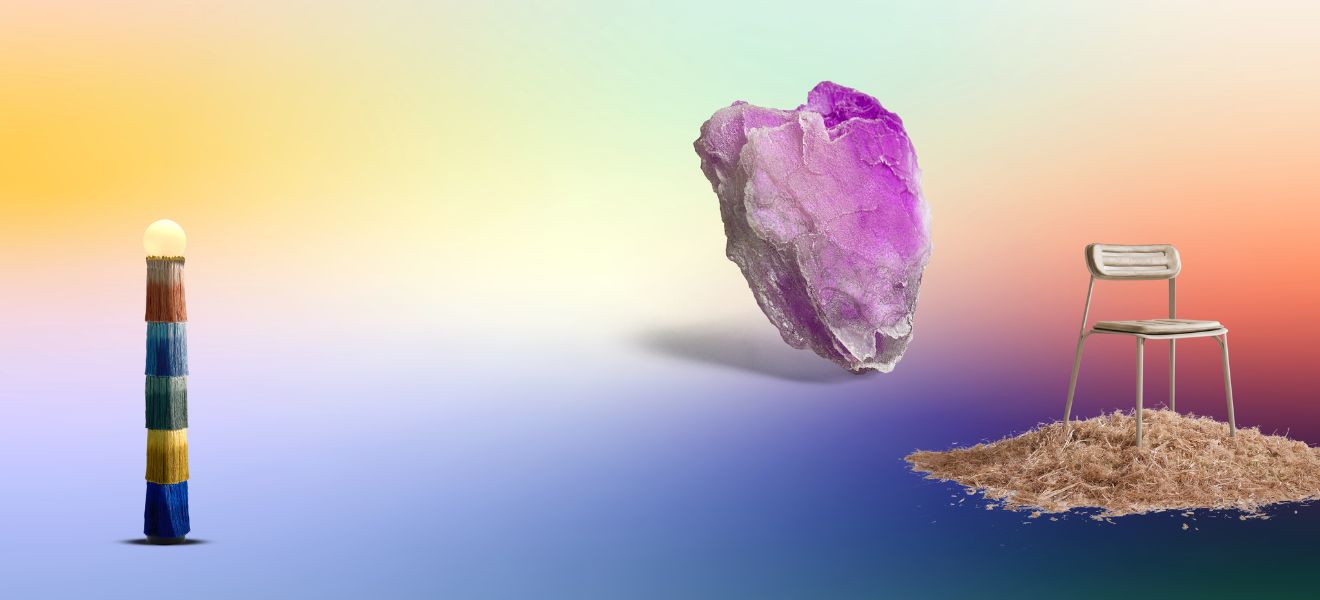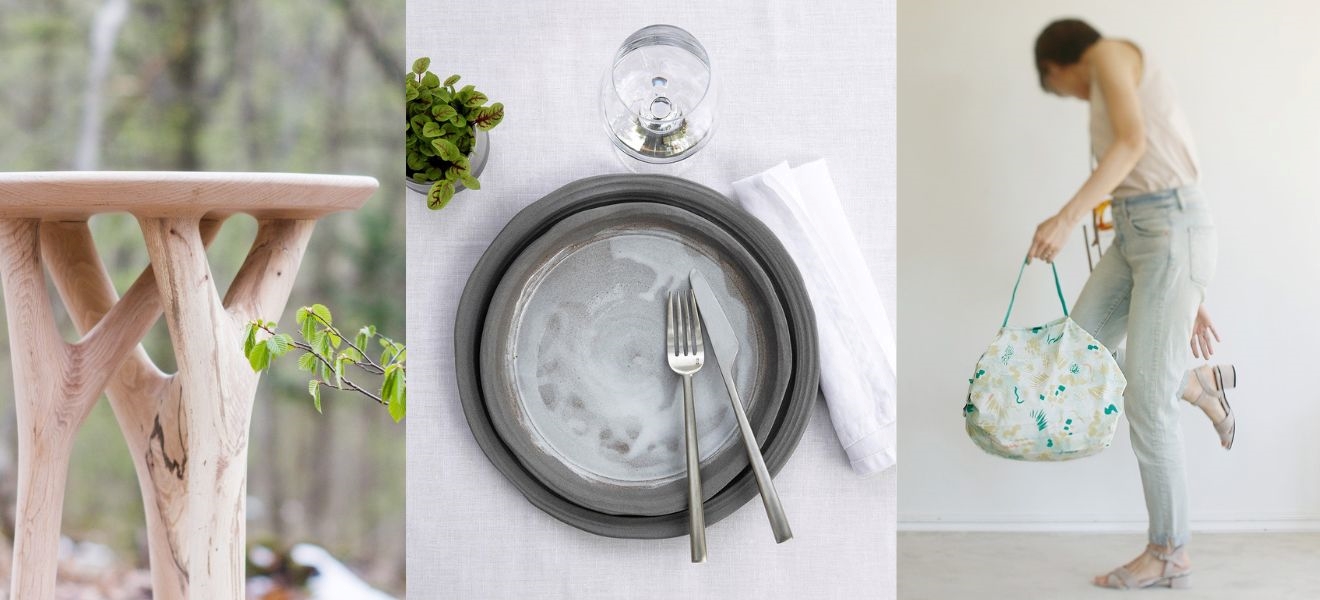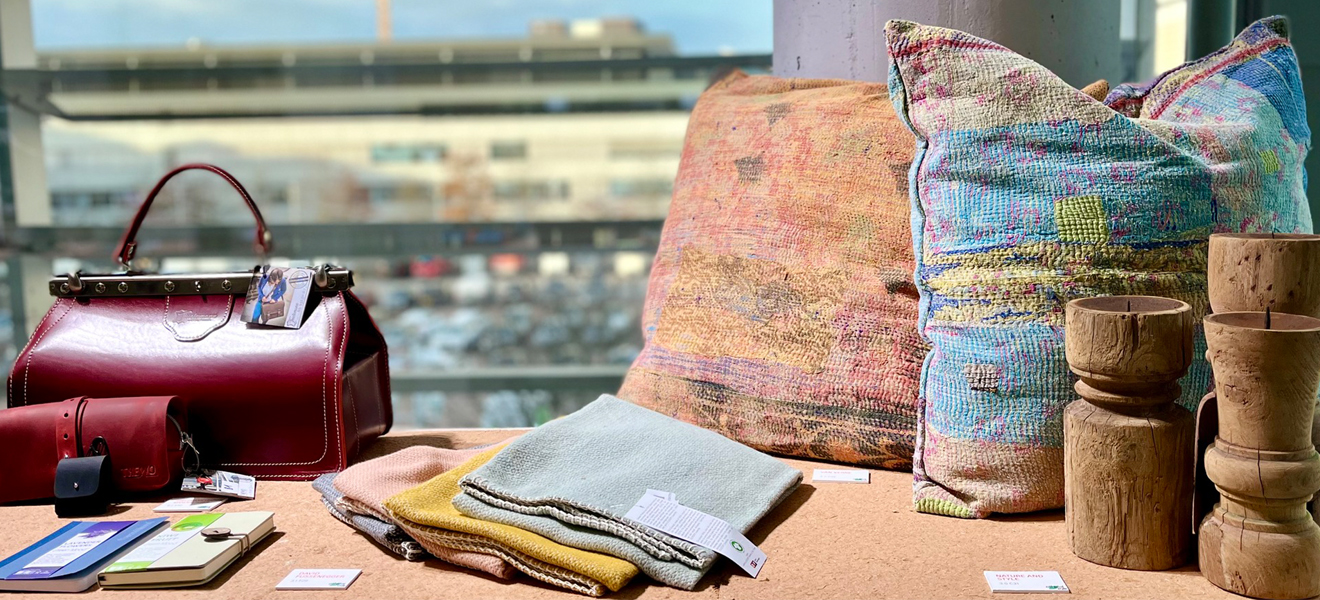Do you need decades of experience to create future-oriented designs that combine aesthetic quality, humour and a lightness of touch? The Ambiente Talents demonstrate that’s absolutely not the case! We’re going to hear a lot more about these gifted newcomers.
Clever roommates
“Birch bark was used in the past like plastic.” Anastasiya Koshcheeva describes a material typical of her native Siberia. Now based in Berlin, she works in collaboration with some of the last craftsmen to practise this Siberian craft and makes storage boxes, lights and stools from the bark – traditionally without adhesives but now combined with modern laser technology. According to the designer, this material has great advantages: “Birch bark is antibacterial and moisture-repellent.” What’s more, the velvety bark is extremely comfortable to sit on, as proven by her wicker stools – a modern adaptation of traditional craftsmanship.


With their velvety electrostatic flocking, the sculptural lights by Marta Cherednik are lovely and soft to the touch. The complex shapes themselves come from a 3D printer. Russian-born and Singapore-based Cherednik is visibly inspired by nature and her eggcups designed for a London restaurant look like birds’ nests.


Speaking of birds, Pavla Boháčová from Pilsen likes to play with swans and other animals. Her original wooden zoo is based on geometry and hemispheric movement.

Japanese product designer Takeshi Nishio amazes us in a quite different way – and takes the principle of the accordion rack to a new level. He constructs fixed shelving units whose height can be varied – ideal for micro-apartments, just like the wall mirrors that open out like purses.


Calculated stylish eccentricity
Isaac Monté grows crystals in his Rotterdam studio. Only when you look more closely, can you see that these fairytale-like exteriors hide a kettle, a lemon squeezer and other design icons. “Preserved for future generations,” says the 29-year-old. The technology is interesting for restaurants, where whole walls can be designed in this way.


Daniel van Dijck would also like to see his experimental designs in restaurants. The artist from The Hague creates bizarre effects in the kiln using peas, which disintegrate and leave their spherical shape solidified on earthenware plates. By contrast, copper dishes appear “wrinkled” thanks to a combination of different casting techniques, and his cutlery looks as if it has been roughly carved. “The tactile designs symbolise processes that take place during digestion in the body,” says the 31-year-old. Eccentricity at its best, in our opinion.

Instead of pottery, G. William Bell creates glass from fire. In a multi-stage process, the Florida glass blower forms geometric vessels from coloured rods. With their colour gradients, some of them resemble Petri dishes containing laboratory samples – a parallel that is confirmed by the virtuoso craftsman.


Then there’s the ingenious trick with the soap that Timo Heinen has invented. Hand soap stays dry when placed in this stainless-steel bowl, which slides the bar of soap into an upright position.

Decorative one-offs
The growing desire for individuality makes one-off items of jewellery more and more attractive: not everyday creations but creations that can be worn every day. Take, for instance, the ancient statements created by Anne Kaden – silver rings cast in the earth. “On a trip to Iceland, I cast several rings at the foot of a volcano,” explains the silversmith. The sulphide and oxide compounds in the earth led to fascinating and rugged colour effects. “This kind of snapshot appeals to couples who have a personal association with the place. For instance, they may have first got to know each other here.


” Uniqueness is also the key for Maria Joanna Juchnowska. She uses waste products from the ceramics industry: “Above all, I recreate distinctive items such as putto heads, for example from the Meissen Archive, and convert them into pendants and earrings,” says the Norwegian-based designer. With her contemporary interpretation of fragmentary “heirlooms” from large manufactories, she creates attractive recycled inspirations.

Güzin Büyük amazes us with the design possibilities of tubular knitwear. Her collection is the result of a family-inspired investigation that formed her bachelor thesis; her mother was a passionate dressmaker. By combining traditional and new crocheting techniques, she creates sophisticated objects for the neck, shoulder and décolleté.


